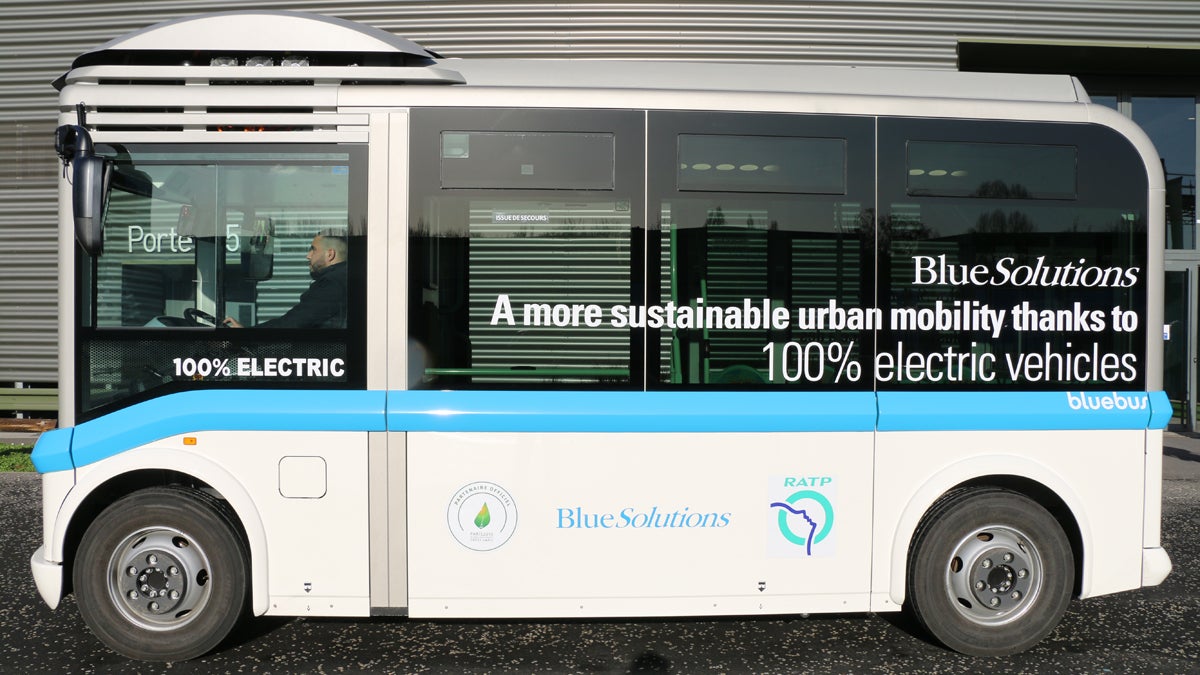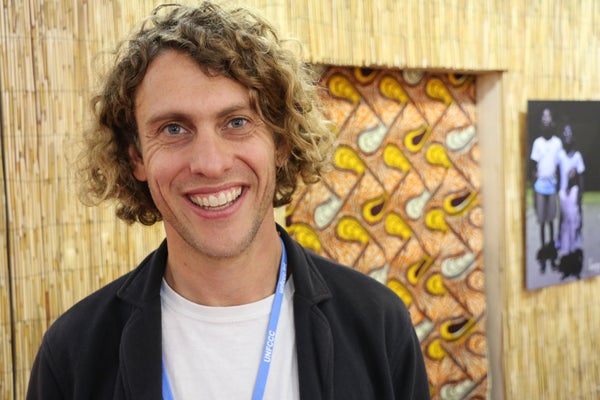Energy efficient innovations on display in Paris
Listen
Small electric buses transport visitors to the “Gallery of Solutions.” After the Paris climate change summit
Visitors to the climate change talks in Paris learned about cutting-edge, low-carbon tech solutions at a side exhibition called the “Gallery of Solutions,” or La Galerie.
A small electric bus transports visitors from the COP21 venue to a large exhibition hall at the old Paris Le Bourget airport. Inside, rows of colorful booths display all kinds of technologies—everything from ultra-thin photovoltaic road surfaces to drones that measure environmental impact from the sky.
My first stop: the booth for a French company Power Vehicle Innovation, or PVI. They’ve developed a technology that can re-charge an electric bus at quick stops along a route. At each bus shelter, an extendable arm on top of the bus connects to an energy storage system, charging the bus in a mere 10 seconds.
“You can drive this without any limitation of range because the bus is charging at every stop automatically,” says the company’s Product Director, Babak Taffazzoli.
The company has labeled their prototype the Watt System, and their first fleet is operating in Southern France.
Just a few rows away, I see a small bamboo hut covered in bright African cloths, and a tall street lamp. This is the booth for a four-year-old start-up called Sunna Design.
“We are a company who designs and manufactures in France solar street lights and solution to bring public lighting in Africa,” says Laura Pargade from Sunna Design. “We developed an innovation that is based on a new battery chemistry that is nickel-based and is very highly resistant to heat.”
Thomas Samuel is the company’s 34-year-old CEO and founder. He became interested in solar energy after working on solar innovations in India. Now, he’s turned his focus to rural Africa.

Thomas Samuel is the CEO and founder of Sunna Design, a company that creates solar street lamps for rural villages in Africa. (Sonia Narang/for WHYY)
“The feedback we get back from the villagers is: it’s amazing, it’s so good to have light at the center of the village, that creates jobs, that creates social activities,” says Samuel. “But, we want to have power inside our house. And we have invented how to distribute a small amount of power to the households.”
At this exhibition, a few countries have their own, larger exhibition spaces. Saudi Arabia has one of the slickest ones. I strike up a conversation with Umar Al-Zahrani an environmental engineer from Saudi energy conglomerate, Aramco. He shows me around the booth.
“Here is the robot that cleans the solar panel,” Al-Zahrani says, pointing to a multimedia presentation showing off the invention. “You know, in our environment, it’s dusty sometimes, so this robot cleans the solar panel frequently,” he adds.
In the USA Pavilion, I met Alix Armour. She’s the founder of a small Southern California start-up, Nimble Scooters.
“We make these really unique kick scooters that have cargo space made to move things over short distances,” Armour says.
She hopes her invention will eliminate the need to drive your giant SUV on a simple errand in your neighborhood.

Nimble Scooters is a small Southern California start-up that makes scooters with a large cargo space. (Sonia Narang/for WHYY)
The Gallery isn’t just hosting small start-ups. Companies like French infrastructure giant Colas is showing off a new, ultra-thin photovoltaic cell. It can be pasted right onto existing roads to create solar energy.
“It’s very new, and it’s something that you can put on roads everywhere in the world,” says Julian Ripoche from Colas. “You can produce energy wherever you want. You can use only 20 square meters to supply a house.”
The several hours I spent walking around were really eye opening. There was so much technology on display that I missed the last electric bus home, forcing me to use the most ancient of energy-saving devices: my own two feet.
WHYY is your source for fact-based, in-depth journalism and information. As a nonprofit organization, we rely on financial support from readers like you. Please give today.



